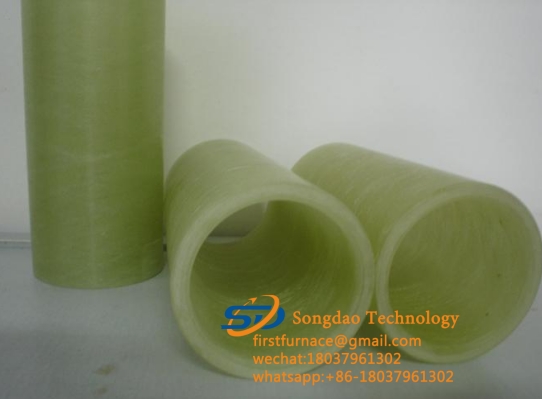- 08
- Feb
Produktionsteknik och utveckling och tillämpning av glasfiberrör
Produktionsteknik och utveckling och tillämpning av glasfiberrör
Det finns tre huvudtyper av glasfiberrör production processes: reciprocating filament winding process, continuous filament winding process and centrifugal casting process.
Fram- och återgående filamentlindningsprocess (tillhör metoden med fast längd): I denna process går dopptanken fram och tillbaka med den roterande dornen, och de långa glasfiberfilamenten placeras i en viss sned vinkel i förhållande till dornaxeln och hjälpvinkeln (dvs. lindningsvinkeln) styrs av förhållandet mellan rörelsehastigheten för dopptanken och rotationshastigheten för dornen, och dopptankens translationsrörelse styrs av datoriserad elektromekanisk styrning. Antalet lindningsskikt ökas gradvis tills den designade väggtjockleken uppnås. Efter att lindningen är fullbordad är hartset i artikeln väsentligen härdat. Efter härdning tas dornen bort från glasfiberröret.
Continuous filament winding process (belonging to continuous method): The process is that the tube passes through a feeding station that supplies resin pre-impregnated roving, chopped glass fiber reinforced plastic fiber and resin sand mixture in motion, and the tube is continuously advancing in the core mold. made in.
Centrifugal casting process (belonging to the fixed-length method): In this process, the cut glass fiber reinforced material and sand are fed into a steel mold fixed on the bearing, and the unsaturated resin with catalyst is injected into one end of the steel mold to make the steel mold. It impregnates the reinforcing material. Under the action of centrifugal force, the resin replaces the air in the fibers and fillers, thereby producing a dense composite material without pores. Due to the action of centrifugal force, the inner wall of the tube forms a smooth and clean resin-rich inner surface layer. Cures at higher temperatures. The pipe made by this method is also called glass fiber reinforced plastic sand pipe.

